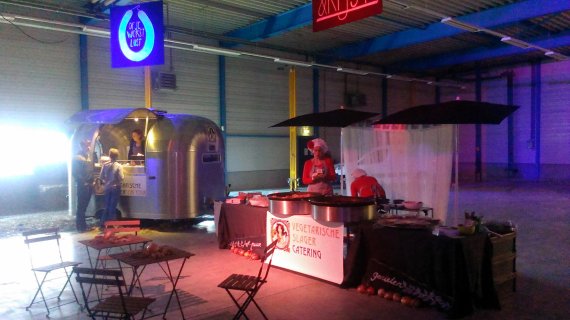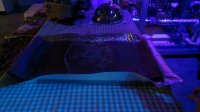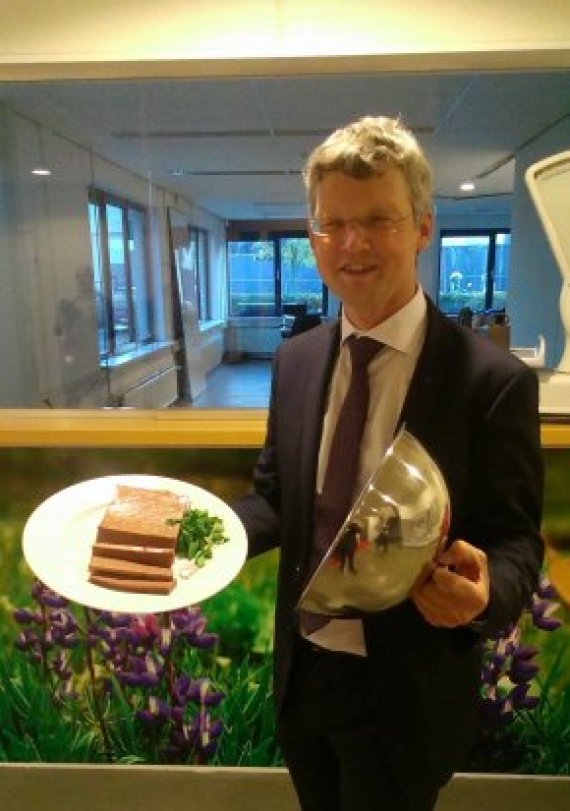A food truck was handing out currywurst. Behind the stalls people in aprons are making hamburgers and tortillas. Some jazz music is playing in the background as hundreds of people are strolling around, talking and standing in line for snacks. No, this is no ordinary summer scene in a park, but an autumn afternoon in an empty factory hall on an industrial site in Breda. Here the Vegetarische Slager (Vegetarian Butcher), the company that collected 2,5 million euro in only three weeks for expansion, presented their new plant. And all those sausages and hamburger? They are thus meatless.
Before they can eat, the audience listens – while sitting on straw bales – to Atze- Jan van de Goot. The professor in protein structuring and sustainability at Wageningen University explains the production process of the vegetable steak that he developed with, among others, the TU Delft. That process starts with soya concentrate and water. They are placed in so called couette device; a large cylinder with a small cylinder inside. The turning motion of the small cylinder together with heat ensures that a meat substitute is made with a fibre structure. Seven kilos at a time.
The resulting fake meat that Van der Goot showed is an intermediate version in progress. ‘But I think that there is only a small step left to achieve the real product’, he says. And so the Vegetarische Slager is interested in the technology that, quoting the director Jaap Korteweg, can produce ‘steak as large as doormats’.
I think that there is only a small step left to achieve the real product
Atze-Jan van der Goot
According to Van der Goot the production process is an improvement for several reasons. Not that the current meat substitutes are bad, he quickly adds. But the pieces produced are often small, and larger pieces of fake meat need to be glued together. The couette device creates opportunities for a larger meat substitute repertoires. The manufacturing process is relatively mild and thus energy efficient.

Today he explains again to his audience why the current meat consumption is a dead end. Not only does this use up too many resources, but it also affects animal welfare and our own health. According to him this vegetable based meat is the only real sustainable alternative. ‘Cultured meat and insects are not more environmentally friendly than meat’, says Van der Goot ‘and will never become as environmentally friendly as vegetable based meat.’

It has to be seen if Van der Goot’s steak can charm the diehard meat eaters. But, in Breda he talks to the converted people. The audience reacts enthusiastically,most of them are already vegetarians. Among them also Fenneke and Suzanne van der Maarel, who have been vegetarians for twenty years. They do not eat a lot of meat substitutes, but Suzanne expects that they can convince meat eaters with this new meat. And so she bought bonds. ‘I believe in this.’

